Baby foods that are high in fiber
30 High Fiber Foods for Babies and Toddlers to Feed Your Baby the Right Way
Fiber is an important nutrient that keeps our digestive system running smoothly. Here are the top healthy High Fiber Foods for Babies and Toddlers.
What is Fiber?
Health Benefits of High Fiber Foods:
30 High Fiber Foods for Babies and Toddlers
1. Oatmeal
2. Whole Grain Cereal
3. Apples
4. Pears
6. Avocado
7. Mango
8. Pineapple
9. Prunes
10. Nuts Powder
11. Carrots
12. Beetroot
13. Sweet potatoes
14. Green Peas
15. Beans
16. Leafy Greens
17. Broccoli
18. Yogurt
20. Millet
21. Berries
22. Whole-grain Bread
23. Whole-grain Pasta
24. Brown Rice
25. Barley
26. Whole Grain Cereal
27. Dried Beans
28. Pomegranate seeds
29. Corn
30. Nuts and Seeds
Frequently Asked Questions
What baby foods have the most fiber?
How can I add more fiber to my baby’s diet?
Buy Healthy Nutritious Baby, Toddler food made by our own Doctor Mom !
As parents, we try our best to plan our kids meals so they get all the nutrients they need. We focus a lot on protein, iron, calcium and healthy fats. However, one thing that often gets missed out is this – fiber. Experts across the board say that for all a healthy digestive system, you need three things – fiber, fluids and fitness. Remove any one of this and you’re in for some trouble – especially in the bathroom!
What is Fiber?
Fiber is the undigestible part of the plant-based food we eat, like fruits, vegetables, legumes and grains. There are two types of fiber – soluble and insoluble.
- Soluble Fiber can dissolve in water. It slows down digestion, making us feel fuller for longer.
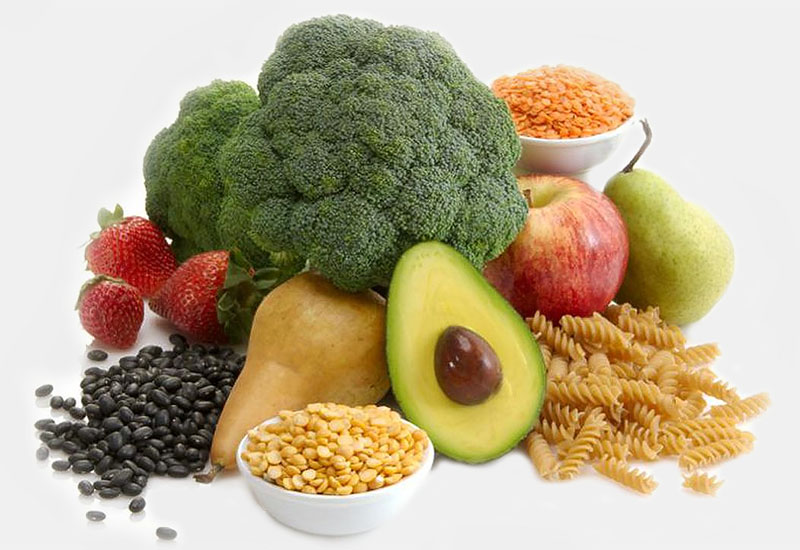 Soluble fiber is found in oats, barley, fruits and legumes like beans or peas.
Soluble fiber is found in oats, barley, fruits and legumes like beans or peas. - Insoluble fiber does not dissolve in water. It adds bulk to stool and pushes it through the digestive system, easing elimination from the body. Insoluble fiber is found in wheat bran and grains.
Both kinds of fiber are important for a healthy digestive system. Along with the right amount of water, it ensures easy and regular movements, while also promoting better absorption of nutrients.
Every person needs 14 grams of fiber for every 1000 calories they consume in a day. For babies, this translates to about 55 to 110 grams of soft cooked high fiber vegetables a day. For older children, this can be broken down as:
- Toddlers (1-3 years old) – 19 grams of fiber a day
- Young Children (4-8 years old) – 25 grams of fiber a day
- Older girls and teens (9-18 years old) – 26 grams of fiber a day
- Older boys (9-13 years old) – 31 grams of fiber a day
- Teen boys (14-18 years old) – 38 grams of fiber a day
If this is hard to remember, a rule of thumb is to add 10 to the child’s age (for children 5 and above).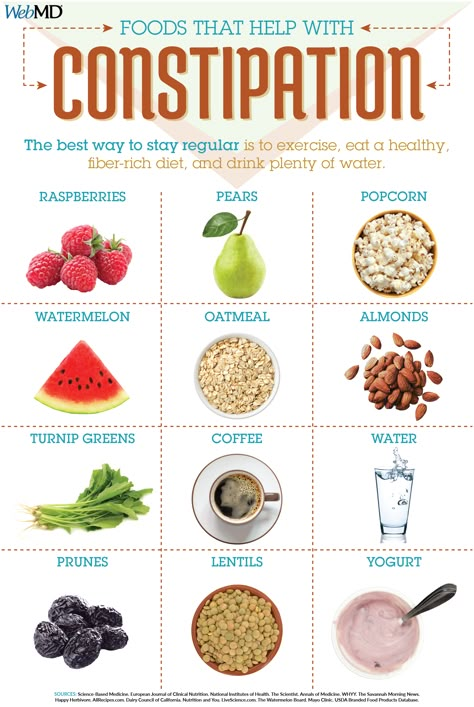 For example a 9 year old would need 19 grams of fiber a day. Ensuring 5 servings of fruits and vegetables a day also helps.
For example a 9 year old would need 19 grams of fiber a day. Ensuring 5 servings of fruits and vegetables a day also helps.
Health Benefits of High Fiber Foods:
- Keeps the digestive system working properly
- Prevents and treats constipation
- Is filling and doesn’t make the child hungry soon
- Prevents overeating and obesity
- Prevents diabetes
- Lowers bad cholesterol
- Prevents heart disease
- Lowers the risk of cancer
- Ensures absorption of nutrients
Besides these benefits, eating high fiber foods for babies and toddlers also prevents nutritional deficiencies, since most fiber-rich foods are rich in minerals vitamins and antioxidants. On the other hand, not having enough fiber can lead to several problems:
- Firm, hard and dry stools
- Infrequent bowel movements
- Crying when trying to pass stools
- Unwillingness to go to the toilet
- Hard and swollen abdomen
- Abdominal pain
- Low appetite
- Bleeding while pass
In severe cases, this can cause stool retention and impaction with stool leakage.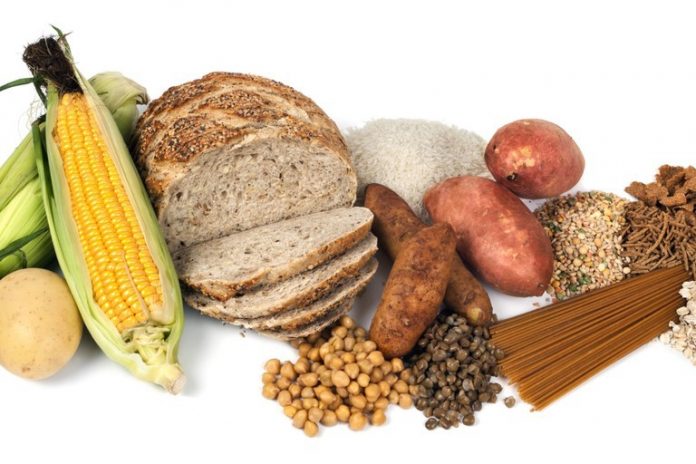
These problems can be fixed with a diet rich in high fiber foods, sufficient water intake and physical activity. A food is considered a high fiber food if it has at least 3-5 grams per serving. It can be heard to go around calculating the individual fiber content of each food, so we’ve rounded up the top high fiber foods for babies and toddler.
30 High Fiber Foods for Babies and Toddlers
List of high fiber foods for babies and toddlers
1.
OatmealOatmeal is one of the easiest ways to increase the fiber in your little one’s diet. Even babies over 6 months can have oatmeal, and it with 4 grams of fiber in a cup of cooked oatmeal, it’s an excellent choice for school going kids too! Go for organic oatmeal to get added health benefits. Try these recipes with oats for your baby:
- Organic Oats Porridge
- Banana Oats Cereal
- Oats Khichdi
- Curd Oats Khichdi
For older kids, try these:
- Oats Egg Custard
- Banana Coconut Oats Porridge
- Carrot Oats Muffins
You can find many more healthy recipes in our list of oats recipes for babies and toddlers.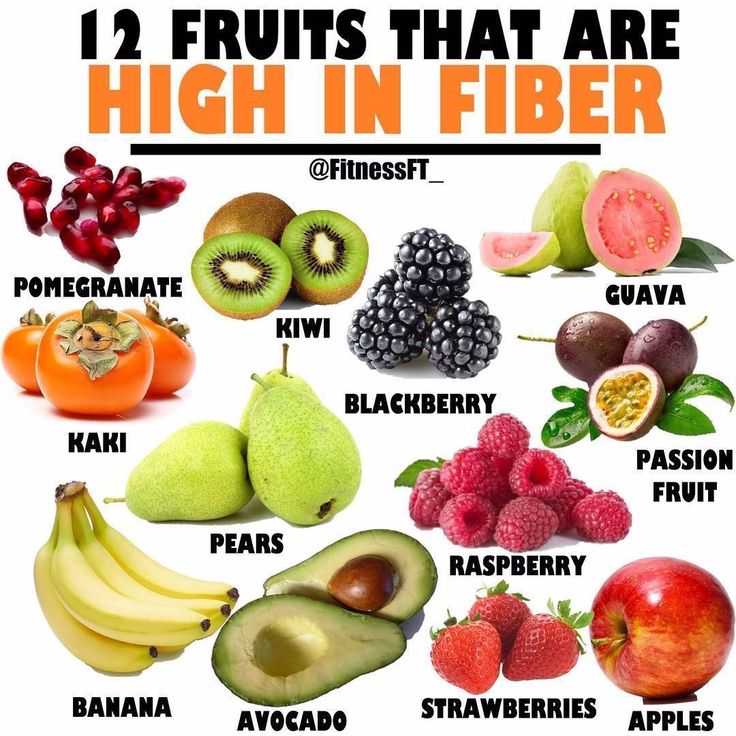
2. Whole Grain Cereal
Baby cereal is a big part of a baby’s diet for the first year, so make sure you choose a cereal that’s high in fiber. Brown rice cereal, barley cereal or oats cereal are all good options. You can also try these recipes:
- Homemade Brown Rice Cereal
- Homemade Barley Cereal
- Banana Makhana Cereal
You can also make many other dishes with baby cereal, for both babies and older kids.
3. Apples
Apples are what most Moms opt for as the first fruit to feed their babies. They’re naturally sweet, easy to digest and have 3.6 grams of fiber in a small apple. With loads of benefits, apples are an excellent choice, especially when fed with the peel on for older kids. For babies, you can try these recipes:
- Apple and Cottage Cheese Puree
- Broken Wheat Apple Halwa
- Apple Ragi Porridge
Older kids will enjoy these:
- Quinoa Apple Porridge
- Apple Protein Milkshake
- Apple Whole Wheat Pancakes
You can also check out our list of healthy apple recipes for babies under one.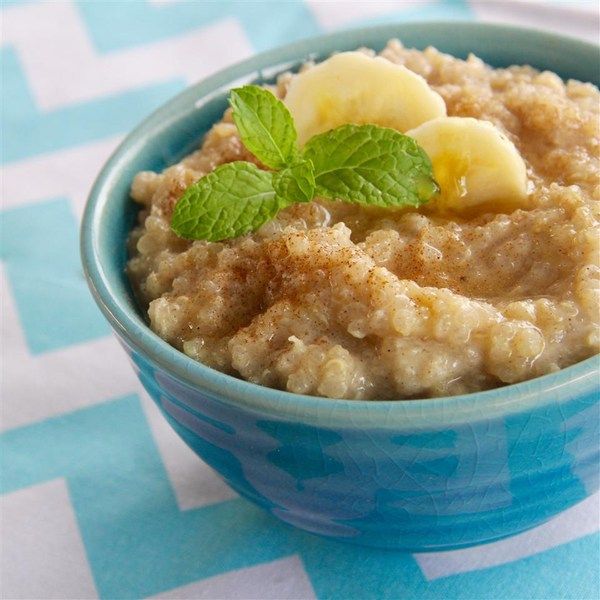
4.
PearsJust like apples, pears are sweet juicy and rich in fiber. A medium pair provides 5.5 grams of fiber, provided it has its skin on. Pears are also easy to feed babies and are easy to digest. You can try these pear recipes for your baby:
- Pear Puree
- Apple Pear Cinnamon Puree
5. Bananas
Bananas – the most preferred way of sweetening baby food without sugar! A medium banana packs 3.1 grams of fiber, making it one of the easiest ways of increasing your child’s fiber intake. From babies to teens, a banana is the ideal travel snack too. Try out these banana recipes for your baby:
- Banana Ghee Fry
- Strawberry Banana Puree
- Kiwi Banana Puree
- Ragi Banana Halwa
For older kids, you can try these:
- Banana Oats Pancakes
- Banana Omelette Recipe
- Barnyard Millet Banana Bread
All bananas have fiber, and raw Kerala bananas help babies gain weight too. Check out our list of healthy Kerala banana recipes.
Check out our list of healthy Kerala banana recipes.
6. Avocado
This creamy delicious fruit finds place in many recipes ranging from sweet to savory. It’s touted as a health food the world over and with good reason – half a cup of avocado has 5 full grams of fiber. Besides, they’re also rich in heart healthy fats. The creaminess of the fruit makes avocado ideal for babies, especially in recipes like avocado puree.
7. Mango
Mango, the king of fruits, is one of those things that kids readily eat, thanks to its juiciness and sweetness. But mango isn’t all about the taste, it’s got loads of fiber too, at nearly 3 grams a cup. While babies can munch on mango slices as finger food, you can also try these recipes:
- Easy Mango Yogurt
- Mango Puree
- Mango Cucumber Soup
Old kids will enjoy mango in these recipes:
- Mango Dates Smoothie
- Homemade Mango Kulfi
- Mango Frooti Concentrate
For more recipe ideas, check out our list of healthy mango recipes for babies and kids.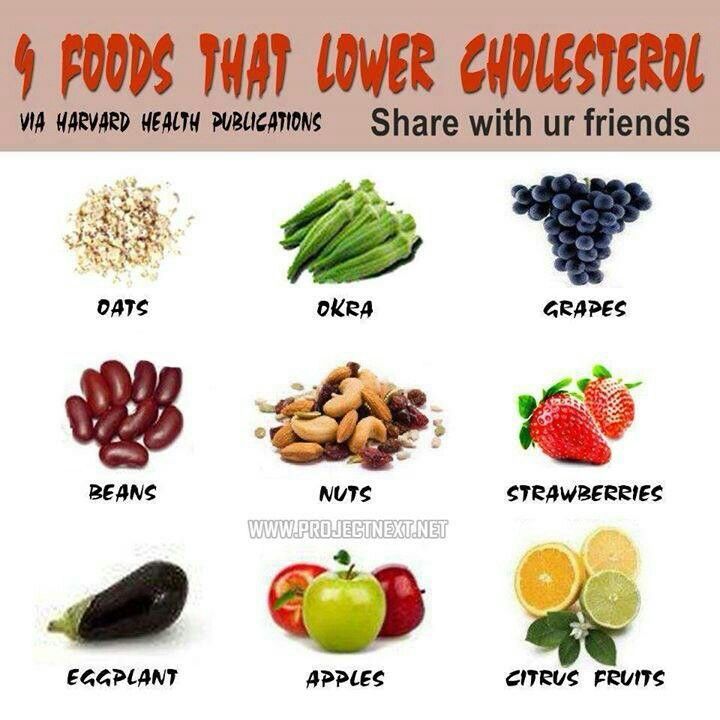
8. Pineapple
The spiky tropical fruit can be fed to babies too! On their own pineapple slices make great teething rings, especially when they’re frozen. What’s more, a cup of pineapple chunks have 2.3 grams of fiber. Besides raw pineapple, you can also try these for your baby:
- Pineapple Carrot Puree
- Pineapple Kesari
Older kids will enjoy an upside down pineapple cake as a healthy afternoon snack!
9. Prunes
Prunes are the number one natural remedy for constipation, and it’s understandable – with 3 grams of fiber in just quarter of a cup, this is a fiber super food! Even little babies can have prunes, both as prevention and treatment for constipation.
10. Nuts Powder
All kinds of nuts are rich sources of fiber and loads of other nutrients including healthy fats. However, nuts can prove to be a choking hazard for babies and young kids, so nuts powder is the best option. You can try either of these:
- Dry Fruits Powder
- Mixed Nuts Powder
This powder can be mixed into any recipe – it’ll only taste more delicious!
11.
 Carrots
CarrotsCarrots are the apples of vegetables; they’re most babies’ first veggie! Not surprising, since carrots are rich in Vitamins A and C, and also have 2.9 grams of fiber in every half cup. Carrot sticks can also be steamed and offered as finger foods. Babies will love these carrot recipes:
- Carrot Puree
- Carrot Oats Porridge
- Carrot Poha Kheer
Older children will enjoy these carrot recipes:
- Egg Carrot Chapathi Roll
- Spiced Carrot Walnut Muffins
- Carrot Cheese Paratha
12. Beetroot
Beetroots are something many children will eat if presented well, since the color itself is so attractive. Not only that, beets are packed with iron, potassium and manganese, as well as a royal 3.8 g in a cup. Try out these beetroot recipes for babies:
- Carrot Beetroot Soup
- Beetroot Chickpea Puree
- Beetroot Pearl Millet Porridge
- Beetroot Potato Pure
- Beetroot Halwa
For older kids, you can try these beetroot recipes:
- Beetroot Burger
- Beetroot Paratha
- Beetroot Rolls
- Beet Applesauce Dip
13.
 Sweet potatoes
Sweet potatoesPotatoes may be popular, but many of us don’t realize that sweet potatoes are just as good, maybe even better! Along with Vitamins A and C, sweet potatoes provide us with 3.8 grams of fiber per medium sweet potato. The simplest way to feed this to babies is with a sweet potato puree. Older kids will enjoy these recipes:
- Sweet Potato Dosa
- Sweet Potato Fries
- Sweet Potato Bruschetta
Green peas are one of the most versatile vegetables available – you can easily add them to stews, soups, purees and much more! Green peas are a great source of protein, and half a cup of cooked green peas provides 4.4 grams of fiber. Babies can have peas in these recipes:
- Green Peas and Potato Puree
- Buttered Green Pea Mash
Older kids can enjoy green peas as part of these recipes:
- Quinoa Vegetable Upma
- Tofu Bhurji
Green beans are easily available, packed with nutrients and also a huge amount of fiber. Half a cup of beans contains a whopping 6-9 grams of fiber, making this a must have in your child’s diet. Babies will enjoy green beans in these recipes:
Half a cup of beans contains a whopping 6-9 grams of fiber, making this a must have in your child’s diet. Babies will enjoy green beans in these recipes:
- Green Beans Puree
- Green Beans as Finger Food
16. Leafy Greens
Leafy greens are always included as part of a healthy diet, and we know that they contain loads of vitamins and iron. But did you know that greens like spinach and turnip greens also contain lots of fiber? One cup of cooked spinach contains 4.3 grams of fiber, while a cup of cooked turnip greens contains a good 5 grams! You can give your baby spinach with these recipes:
- Carrot Palak Puree
- Spinach Oat Pancakes
Older kids will love seeing the beautiful green color in these recipes:
- Creamy Spinach Soup
- Spinach Phulka
- Spinach Fritters
- Palak Poha Pakoda
Don’t forget to check out our list of healthy spinach recipes for babies and kids.
17. Broccoli
Broccoli isn’t something most kids eat readily, but there are ways to get kids to like broccoli. And it’s worth the effort too, considering one cup of cooked broccoli contains 5.1 grams of fiber. Broccoli can be given to babies but may cause excess gas, so introduce slowly and in small quantities, with these recipes:
- Broccoli Spinach Puree
- Broccoli Butter Puree
Older kids can try a broccoli mushroom soup. You can also check out our list on healthy broccoli recipes for babies and kids.
18. Yogurt
Yogurt isn’t exactly a high fiber food, but it deserves a place in this list because it contains probiotics and is crucial for a healthy gut and healthy digestion overall. Try these yogurt recipes for babies:
- Homemade Curd
- Homemade Strawberry Yogurt
- Homemade Mango Yogurt
- Coriander Curd Khichdi
- Turmeric Buttermilk
There are many ways to include yogurt in older kids’ food, like these recipes:
- Gopalkala
- Chocolate Yogurt Parfait
- Frozen Yogurt Bark
- Yogurt Fruit Parfait
- Curd Fritters
- Tricolor Fruit Parfait
- Flaxseed
Flax seeds are available in most supermarkets these days and are incredibly versatile since they can be added to anything.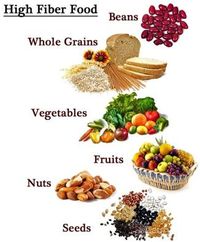 What’s more, a tablespoon of flax seeds contains 3 grams of fiber. For little ones, you can grind flax seed at home and sprinkle over their cooked food or into batter or dough before cooking. You can also add it to smoothies and soups.
What’s more, a tablespoon of flax seeds contains 3 grams of fiber. For little ones, you can grind flax seed at home and sprinkle over their cooked food or into batter or dough before cooking. You can also add it to smoothies and soups.
20. Millet
Our grandmothers probably knew a thing or two about fiber, which is probably why millet featured so much among our traditional dishes! A 100 gram serving of millet contains a big 9 grams of fiber! And since millet can be given to babies, there are many recipes you can try:
- Multi Millet Porridge
- Beetroot Pearl Millet Porridge
- Little Millet Porridge
Older kids will love these recipes made with millet:
- Millet Kheer
- Multi Millet Paneer Paratha
- Barnyard Millet Vegetable Salad
- Millet Sathumaavu Laddu
- Pearl Millet and Green Gram Pesarattu
- Whole Grain Multi Millet Pancakes
You can get 100% natural millet preparations like Sprouted Finger Millet Flour, Millet Sathumaavu Health Mix, Organic Millet Dosa Mix, Foxtail Millet Noodles and Barnyard Millet Noodles.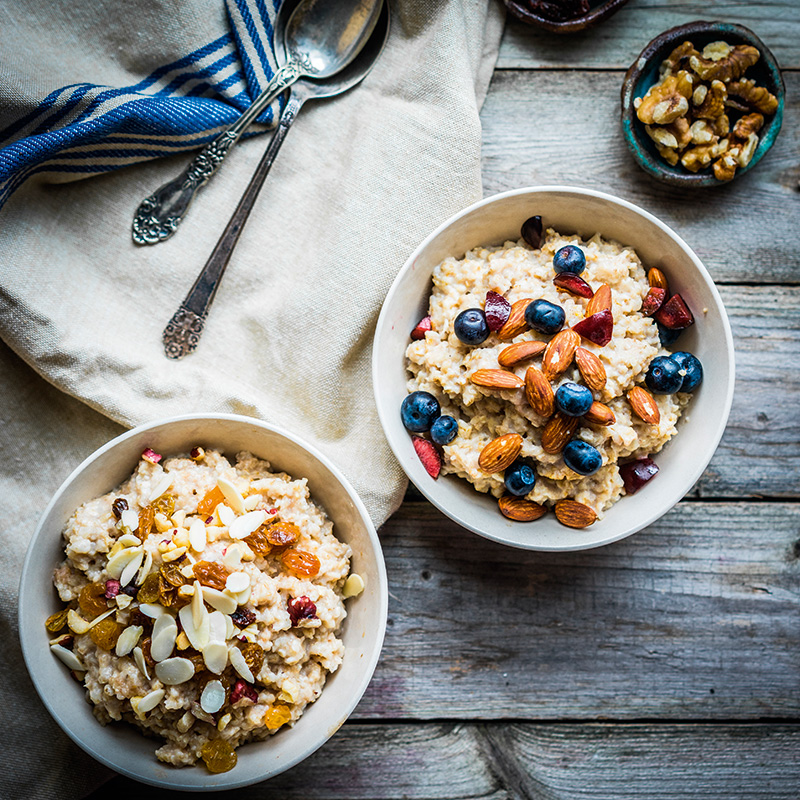
21. Berries
Berries are pretty, and that may be one reason kids love them! But berries are also high in fiber, with raspberries topping the list at 4 grams in every half cup. Blueberries have 1.8 grams per half cup and strawberries have 1.5 grams fiber for half a cup. Babies will love a strawberry banana puree, while kids will love these recipes:
- Strawberry Cookies
- Strawberry Lassi
- Strawberry Banana Pancakes
- Strawberry Yogurt Muffins
You can also check out our list of healthy strawberry recipes for babies and kids.
(The foods in the list below are suitable for Children over One Year)
22. Whole-grain BreadWhite bread is made with grain that has the bran removed, which means no fiber. However, whole grain bread includes the bran and has about 2 grams of fiber a slice. So a sandwich with two slices gives you 4 grams! Here are a few recipes to try with whole grain bread:
- Homemade Whole Wheat Bread
- Hung Curd Sandwich
- Tricolor Sandwich
- Crispy Coconut Chutney Sandwich
- Paneer Sandwich
- Tricolor Bread Sushi Rolls
- Easy Bread Rolls
- Banana Coconut French Toast
23.
 Whole-grain Pasta
Whole-grain PastaJust like whole grain bread, now whole wheat pasta is also becoming increasingly available. Half a cup of cooked whole wheat pasta has 2 grams of fiber and what’s more, it is more filling than regular pasta. Combine with other high fiber veggies and you have a meal! Check out these pasta recipes for kids:
- Minestrone Soup with Pasta
- Creamy Vegetable Pasta
- Vegetable Pasta Recipe
- Indian Style Macaroni
Besides pasta, you can also check out our range of 100% natural noodles made of whole grains and millet.
24. Brown Rice
White rice has the outer covering removed, which is why it is not as filling as brown rice. A cup of brown rice has a decent 3.5 grams of fiber, and goes great with all other ingredients from vegetables to chicken! Check out these brown rice recipes for kids:
- Okra Rice
- Paneer Vegetable Fried Rice
- Coriander Vegetable Rice
- Bell Pepper Fried Rice
- Vegetable and Soya Chunks Rice
- Brown Rice Flakes Kheer
- Brown Rice Poha
- Brown Rice Cutlets
- Coconut Rice
25.
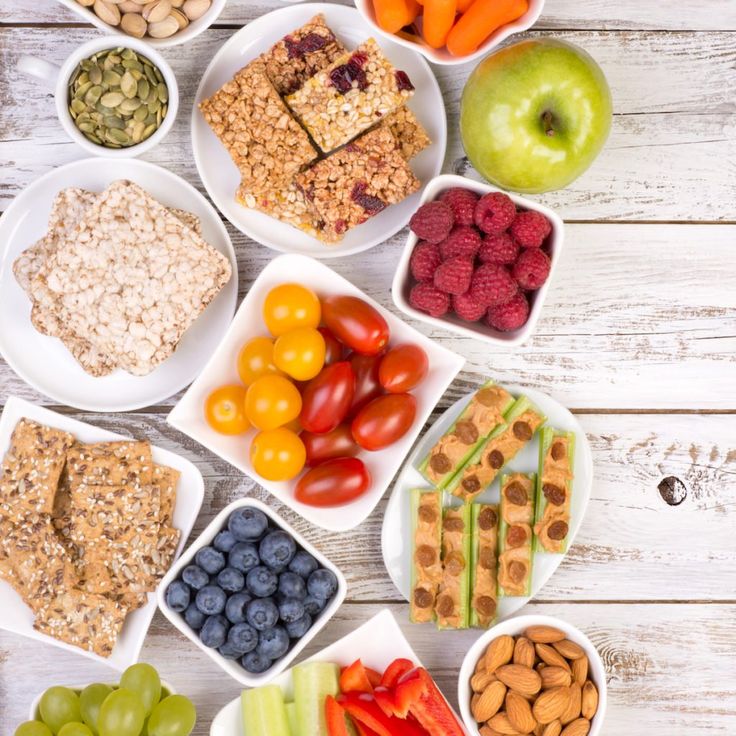 Barley
BarleyBarley has got to be the Superman of high fiber foods. With an incredible 32 grams of fiber in a cup of hulled barley, it’ll easily help taking care of your fiber needs for the day! Barley can be used in many ways, as you’ll find in our list of barley recipes for babies and kids.
26. Whole Grain Cereal
Cereal is one of the easiest things to feed kids for breakfast. After all, the only thing you need to do is serve with some milk! However, store bought cereals are notorious for being high in sugar and low on fiber. You can easily fix this with homemade cereal, which has about 9 grams of fiber in a ½ cup serving. Here are some options to try:
- Chocolate Muesli
- Fruit and Nut Granola
- Maize Flakes with Milk and Honey
27. Dried Beans
Dried beans tackle two common nutritional deficiencies in Indian kids – protein and fiber. Legumes like rajma and chana have 12-16 grams of fiber per serving, and they’re incredibly filling too! Here are some recipes you can try out with dried beans:
- Rajma Dosa
- Sprouted Moth Beans Frankie
- Rajma Veggie Quesadillas
- Rajma Sandwich
- Healthy Kidney Bean Soup
- Kid-friendly Chicken Chilli
- Chickpea Veggie Pancakes
- Roasted Chickpeas
Remember, sprouting dried beans multiplies their benefits manifold, by making their nutrients more bio-available.
Pomegranate seeds look like little jewels, and they certainly are, in terms of nutrition! These little red seeds have 3 grams of fiber in just half a cup and kids love them because of that burst of sweetness they have. Babies can try a pomegranate juice, while kids can enjoy these recipes:
- Eggless Apple Cake with Pomegranate
- Sugar Free Fruit Custard
- Sathumaavu Dahi Papdi Chaat
- Maize Flakes with Milk and Honey
- Homemade Constipation Juice
29. Corn
Corn is a popular dish with kids, probably because it is often associated with vacations and trips outside. It is one of those indulgences that are actually healthy! Half a cup of cooked corn has 1.8 grams of fiber. Here are some simple recipes to try with corn:
- Sweet Corn Fritters
- Baby Corn Fritters
- Sweet Corn Vegetable Soup
- Sweet Corn Fried Rice
- Sweet Corn Salad
- Cheese Corn Balls
30.
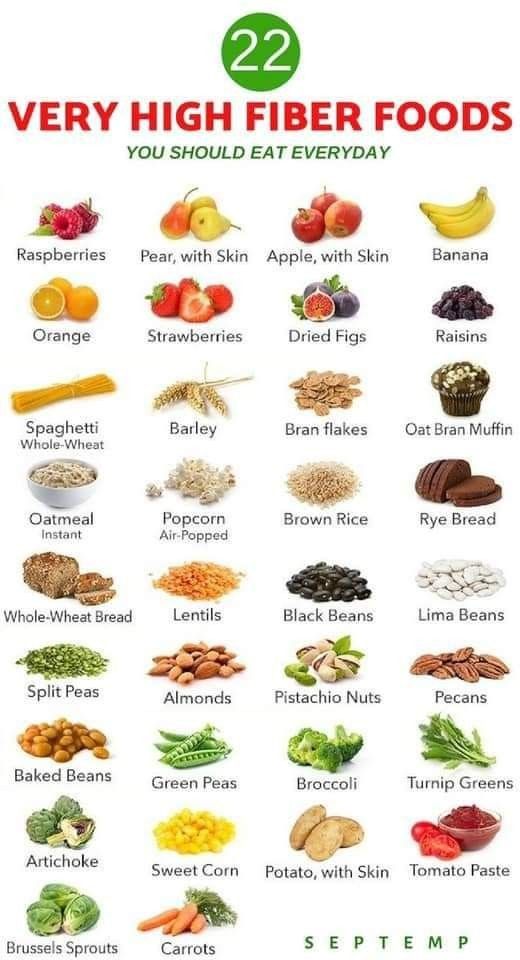 Nuts and Seeds
Nuts and SeedsAlmost all nuts and seeds are packed with fiber, and that’s great because you can switch things up with a different variety. Almonds have the most fiber, with over 3 grams in a single serving while peanuts have over 2 grams. If your child has nut allergies, you can try pumpkin seeds or sunflower seeds instead. Check out these recipes with nuts you can try:
- Dates and Nuts Cooker Cake
- Homemade Peanut Butter
- Mixed Nuts and Poha Laddu
- Pistachio and Raisin Coconut Cookies
- Homemade Almond Milk
- Almond Shortbread Cookies
- Dates Almond Milkshake
- No Bake Brownies with Dry Fruit
- No Cook Dry Fruit Modak
- Dry Fruit Jaggery Energy Bars
- Dry Fruit Balls
Here are some recipes with seeds:
- Baked Ragi Crackers with Sesame Seeds
- Dates Chia Seeds and Apricot Laddu
- Dates Sesame Seeds Laddu
Tips for feeding Kids High Fiber Foods:
- Switch your regular grain with whole grain, like replacing maida with atta, or white rice with brown rice
- Make sure there is a fruit and vegetable at every meal
- Opt for whole fruits instead of fruit juice
- Add dry fruits powder or nuts powder to cooked dishes or into batter, dough or smoothies
- Add fruit, nuts and seeds to yogurt, cereal or oatmeal
- Add vegetables like lettuce to sandwiches
- Ensure kids drink enough water along with high fiber foods
Add these high fiber foods for babies and toddlers to the child’s diet gradually, increasing the quantity slowly.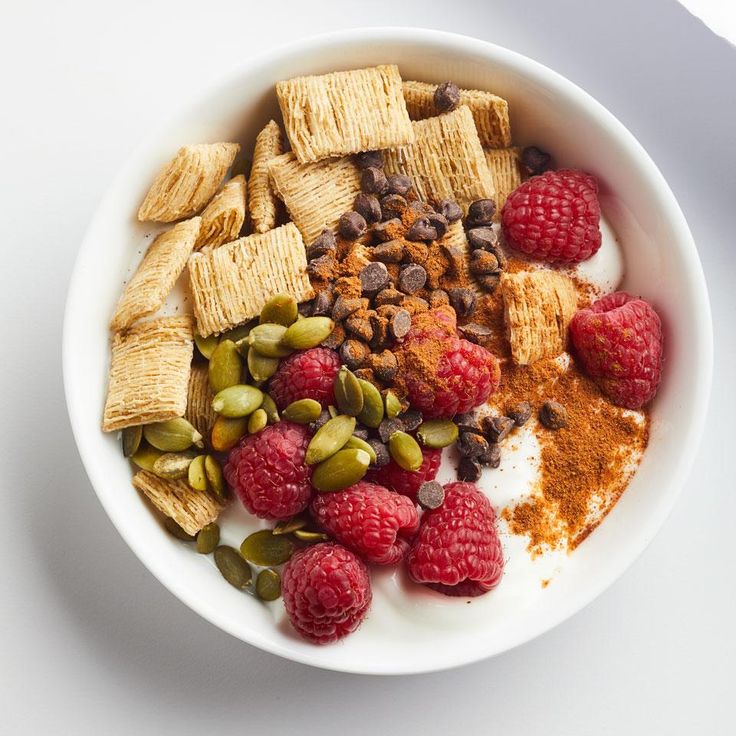 When introducing a new food for babies, always follow the 3-day rule. Too much fiber can cause bloating or gas as well as abdominal pain. When buying a food that claims to be high fiber, read the label carefully. Fiber is listed under ‘Total Carbohydrates’ as ‘Dietary Fiber’. A truly high fiber food should have at least 3 grams fiber per serving.
When introducing a new food for babies, always follow the 3-day rule. Too much fiber can cause bloating or gas as well as abdominal pain. When buying a food that claims to be high fiber, read the label carefully. Fiber is listed under ‘Total Carbohydrates’ as ‘Dietary Fiber’. A truly high fiber food should have at least 3 grams fiber per serving.
Please remember that the WHO recommends exclusive breastfeeding for the first six months, and there is no need of added fiber before that. If baby seems constipated during this time, it may help for the mother to eat some high fiber foods like prunes.
Frequently Asked Questions
What baby foods have the most fiber?
Oats, all fruits and vegetables have the most fiber in them.This article lists about 30 high fiber foods for babies.
How can I add more fiber to my baby’s diet?
Babies need about 55 to 110 grams of soft cooked high fiber vegetables a day. This article lists about 30 high fiber foods for babies.
Buy Healthy Nutritious Baby, Toddler food made by our own Doctor Mom !
Shop now!5 High Fiber Rich Foods For Babies
Fiber-rich foods and recipes for prevention and treatment of constipation.
Research-backed
MomJunction believes in providing reliable, research-backed information to you. As per our strong editorial policy requirements, we base our health articles on references (citations) taken from authority sites, international journals, and research studies. However, if you find any incongruencies, feel free to write to us.
Image: Shutterstock
Fiber is an essential nutrient that adds bulk to the stools and facilitates their smooth passage. Besides, it acts as a natural prebiotic that promotes good bacteria (probiotics) growth and supports gut health. Therefore, selecting age-appropriate high-fiber foods for babies is essential. Perhaps it is the reason that the American Dietetic Association (ADA) recommends people across age groups consume sufficient amounts of dietary fiber from various plant foods (1) (2).
Scroll down to read more about dietary fiber and its possible benefits for babies, its side effects, and some high-fiber recipes you can feed to your baby. But before we dwell on details, let’s first understand the basics and learn some basic facts about fiber and its types.
Is Fiber Good For Babies?
Fiber is good for babies. The inclusion of dietary fiber in a baby’s diet can help enhance gut microflora and keep the digestive system healthy. Research suggests that the first years of life are crucial for establishing a healthy colonic microflora, as well as good eating habits (3). Thus, the intake of dietary fiber for babies is beneficial.
Related: Are There Any Benefits Of Prebiotics For Babies?
Dietary Fiber And Its Types
Dietary fiber or fiber is a type of complex carbohydrate found in plant foods (4). It cannot be easily digested in the small intestine, and this brings in the health benefits associated with it.
There are two forms of dietary fiber, soluble and insoluble. Most plant foods contain some amount of each type, which can provide specific health benefits.
How Much Fiber Do Babies Need?
There are no clear guidelines on the recommended amount of dietary fiber for babies younger than one year (5) (6). Nutrition experts recommend five grams of fiber a day for children below the age of two years (7). It is best to consult a pediatric nutritionist to know about the ideal limit for your baby.
Uses Of Fiber For Babies
Fiber is an important part of an individual’s diet. It is helpful in the following ways for the baby:.
- Supports digestive health: Insoluble fiber, a type of dietary fiber present is whole grains, whole pulses, raw fruits, and vegetables is vital for maintaining digestive health. Upon ingestion, it swells up in the intestine by trapping water and adds bulk in the diet leading to smooth passage of stool.
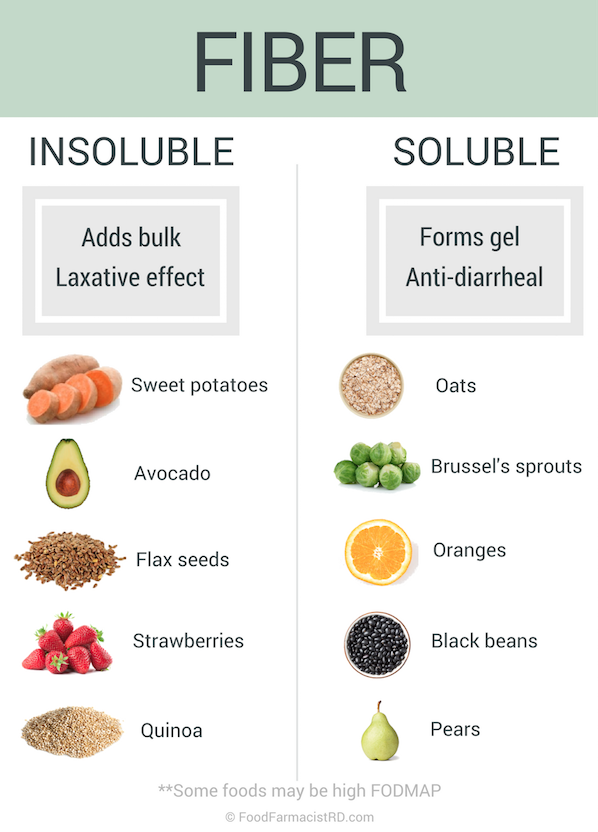 It helps prevent constipation, and supports the pH of the intestine, and prevents colonization of harmful microbes (8) (9).
It helps prevent constipation, and supports the pH of the intestine, and prevents colonization of harmful microbes (8) (9).
- Good for gut microflora: The total dietary fiber, i.e., soluble and insoluble fiber, works as prebiotics or food for millions of probiotic bacteria living in the human gut. According to a research study published in the Journal of Cell Host and Microbe, the type, quality, and origin of food impacts the gut microbes (10).
- Strengthen immunity: Dietary fiber works as prebiotics and helps enhance immunity by increasing the population of beneficial microbes, such as lactic acid bacteria and bifidobacteria (11) (12). These bacteria could help fight harmful pathogens, and thus boost immunity.
- Supports absorption: A healthy gut harbors healthy microbiomes that assist in the proper digestion of food and absorption of nutrients (13) (14).
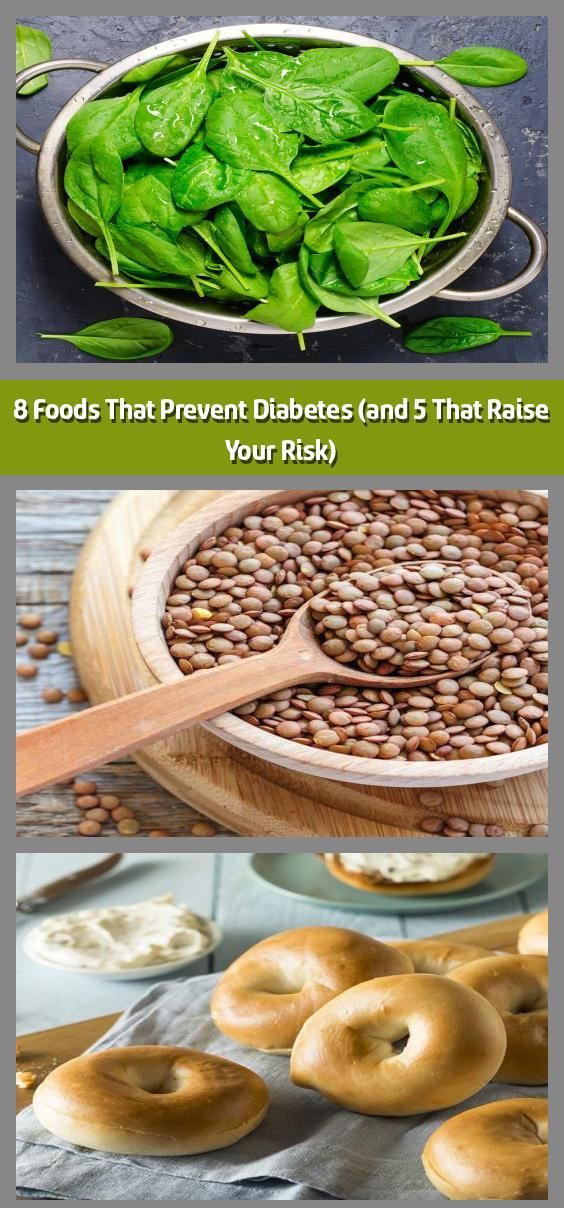 Both these processes are vital for maintaining overall health and well-being.
Both these processes are vital for maintaining overall health and well-being.
- Improves appetite: Soluble fiber helps keep the tummy full. On consumption, it combines with water and forms a gel-like structure that delays gastric emptying. This mechanism increases the total amount of time the food stays in the gut and thus facilitates the sensation of satiety. It also helps in the secretion of appetite-regulating hormones within the gastrointestinal tract (15).
There are several sources of dietary fiber for babies. In the next section, we tell you about the fiber-rich foods you can feed your baby.
High Fiber Foods For Babies
A well-balanced, fiber-rich diet for a baby includes foods from the following food groups.
1. Grains (and cereals)
You can include cereals and grains in a baby’s diet as they begin eating solids. It will add variety in the meals and ensure the intake of fiber along with other vital nutrients. A few options that you can try are oatmeal, brown rice, barley, whole wheat, and maize. Besides, you can also try adding some pseudocereals such as quinoa, buckwheat, and amaranth (16).
A few options that you can try are oatmeal, brown rice, barley, whole wheat, and maize. Besides, you can also try adding some pseudocereals such as quinoa, buckwheat, and amaranth (16).
2. Vegetables
Babies can consume all vegetables pretty much at the onset of starting solids. Vegetables are a good source of micronutrients and dietary fiber. Besides, they are not high in simple carbohydrates. A few high-fiber vegetables that you could try for your baby are spinach, broccoli, beans, edamame, sweet potato, corn, and carrots. Give these vegetables in cooked and pureed form since babies might find it difficult to digest raw vegetables. Or if using the baby-led weaning approach to feeding, give the vegetables cooked until soft and cut into wedge-sized pieces for younger babies, or bite-sized pieces for older babies.
Related: 16 Best Vegetables For Babies From Infancy To One Year
3. Fruits
Fruits contain dietary fiber and also several micronutrients. It is good to include at least one fruit a day in your baby’s diet. Some high-fiber fruits that you can consider are watermelon, muskmelon, apple, banana, strawberries, and blackberries.
Some high-fiber fruits that you can consider are watermelon, muskmelon, apple, banana, strawberries, and blackberries.
4. Dried fruits
Dried fruits are potential choking hazards for babies around 6-12 months of age (17). But you can serve them in cooked and pureed form. Once your baby has started finger foods, you can cook dried fruits or chop them into small pieces to feed the baby. Some of the high-fiber options are prunes, apricots, dates, and figs.
5. Pulses and legumes
Pulses and legumes are considered a good source of protein and micronutrients like iron, potassium, and folate. However, they are also good sources of dietary fiber. Some options from this food group that you could include in your baby’s diet are horse gram, Bengal gram (whole), kidney beans, split peas, lentils, and chickpeas.
Possible Side-Effects Of Excessive Fiber Intake
People who consume fiber are less susceptible to chronic diseases (1). But you shouldn’t go overboard because it could have some adverse outcomes (18).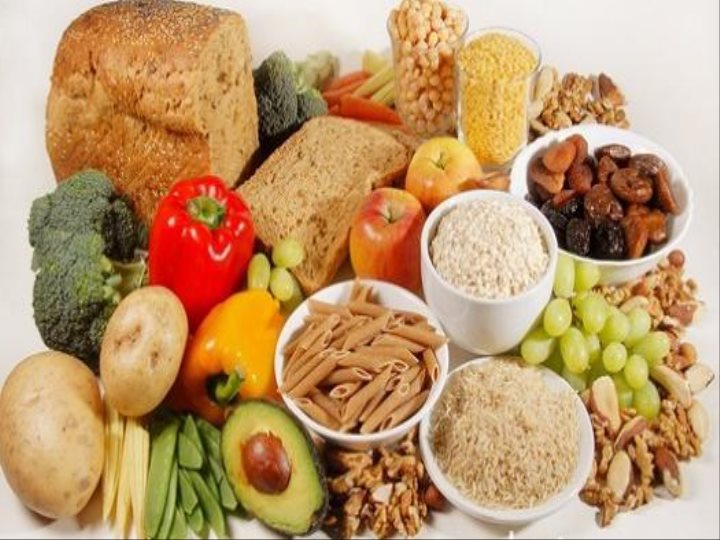
- High fiber and low water intake may lead to constipation or diarrhea.
- It might lead to a decrease in mineral absorption, which could be detrimental to the baby’s health.
- Consuming excessive fiber may cause flatulence, bloating, abdominal cramps, and nausea.
- It may cause a decrease in appetite in some cases and might lead to growth failure.
Precautions To Take While Introducing Fiber Foods To Babies
- Observe variety and moderation in the foods you give your baby.
- Start with a single grain (or cereal) for young babies. As the baby grows older, you can start multigrain meals.
- Minimize fiber loss by not peeling fruits and vegetables. Scrape them instead.
- Consult a pediatrician before starting a new fiber food for your baby.
- Water intake, along with fiber intake, is important.
 Fiber needs water to function (19). Offer small amounts of water (1-2oz) in an open cup with meals. Breast milk or formula are still the primary sources of nutrition for the entire first year, so make sure to give a milk feed an hour or so before offering solids to maintain hydration levels.
Fiber needs water to function (19). Offer small amounts of water (1-2oz) in an open cup with meals. Breast milk or formula are still the primary sources of nutrition for the entire first year, so make sure to give a milk feed an hour or so before offering solids to maintain hydration levels.
- Babies must have fiber from natural foods only. Avoid using isolated or commercial fiber.
Related: Rice Cereal For Babies: Health Benefits And Nutritional Value
Ways To Include High Fiber Foods In Baby’s Diet
The following are a few interesting recipes to include fiber in your baby’s diet.
For babies five to six months old
Babies at this age do not develop eating skills and digestive systems. So, the best way to introduce food to them is in the puree or mashed form. It ensures easy swallowing and digestibility.
For optimum fiber intake, vegetables like sweet potato, carrot, and green peas can be included in the diet. You can also include fruits like apple, banana, and raspberries.
1. Sweet Potato Puree
Image: Shutterstock
You will need:
- 1 sweet potato
- 1tsp extra virgin olive oil
- ¼tsp cumin (optional)
How to:
- Wash sweet potato in cold water and with a thin, bristled brush scrape its skin to remove dust and dirt from the surface.
- Once it is clean, dice the sweet potato into pieces of approximately two inches in size.
- Put these pieces into a pan and place the pan on a medium flame. Add enough water to cover the pieces and cover the lid of the pan.
- Let the pieces cook for 15-20 minutes. Check with a fork if the pieces are soft.
- Once done, put the pieces with water in a blender and blend until you get a smooth paste.
- Take another pan, pour oil in it, and place the pan on low flame.
- As the oil gets heated, add cumin. Once cumin starts to flutter, add the puree in the pan.
- Keep stirring the puree and cook for three to four minutes, and then your puree is ready to serve.

2. Banana Puree
Image: Shutterstock
You will need:
- 1 ripe banana
- 2-4tbsp water
How to:
1. Peel the banana and cut it into small pieces. Put these pieces into a blender to ensure no lumps are there.
2. Add water in the blender as per requirement and blend until you get a smooth puree.
3. Pour the puree in a cup, and it is ready to serve.
Note: You can add breast milk or formula milk instead of water to make these purees smoother.
For babies 6-12 months old
Babies in this age bracket usually progress from purees to finger foods. Since the baby’s digestive system is more mature now, you can include foods from different food groups.
3. Veggie Lentil Soup
Image: Shutterstock
You will need:
- 1 cup mixed lentils
- 1 cup diced vegetables (carrots, peas, corn, broccoli, onions, tomatoes, and zucchini)
- Parsley (chopped) – for garnishing
- Lemon juice (optional)
- 2tsp virgin olive oil
- ¼tsp black pepper powder
- Salt to taste
How to:
- Take a bowl, put lentils in it, and wash thoroughly for at least two to three times and keep it aside.
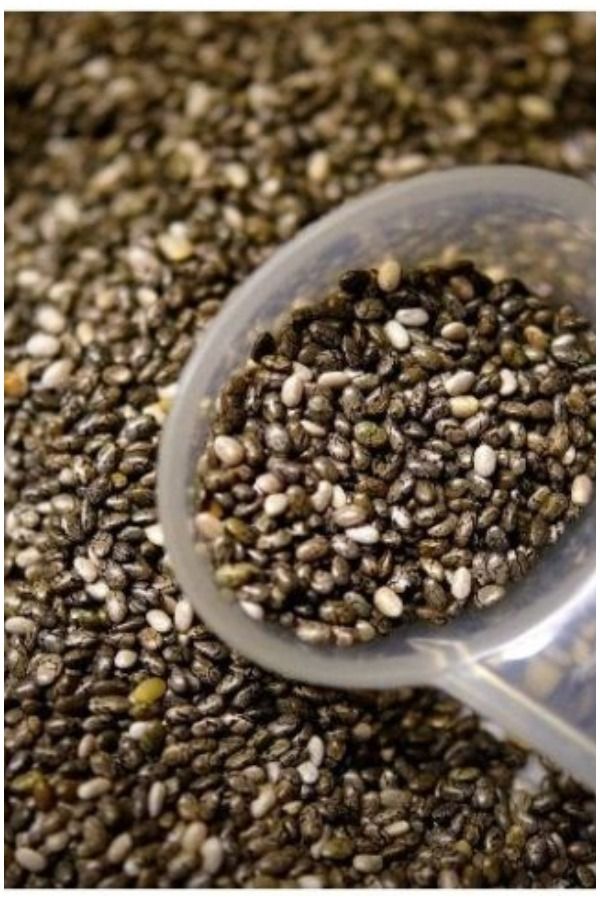
- Wash all the vegetables thoroughly in cold water. Clean them with a thin bristled brush to remove all the dust and dirt.
- Take another bowl, cut all the vegetables, and keep the bowl aside.
- Now, take an iron pot, and place it on medium flame. Pour oil in it, and as the oil gets hot, put onions in it.
- Fry the onions till golden brown, add all the vegetables in the pot, and then cook for five minutes.
- Add lentil mix in the pot and mix everything well.
- Pour water into the pot until the veggie and lentil mix gets covered. Place a lid and cover the pot
- Keep the pot on simmer and let the mix cook for 15 minutes. Check with a fork in between. If vegetables and lentils are soft, then switch off the flame.
- Once the mixture is cooked, you can transfer it into a bowl and mash it. If you want a thinner consistency, then you can also blend it.
- Add pepper powder, and lemon juice to taste and garnish with parsley. Your soup is ready to serve.

4. Yummy Roasted Vegetables
Image: iStock
You will need:
- 1 bowl of vegetable pieces (carrots, capsicum, corn, broccoli, onions, tomatoes, and zucchini)
- Lemon juice (optional)
- 2tsp virgin olive oil
- ¼tsp black pepper powder
How to:
- Wash all the vegetables thoroughly. Clean their skin with a thin, bristled brush to remove dust and dirt from the surface.
- Cut the vegetables into thin slices and place them on a roasting plate lined with baking sheet. Place the vegetables with gaps, avoid overlapping so that vegetables can get cooked evenly.
- Drizzle olive oil and sprinkle pepper.
- Preheat oven to 400°F (205°C). Place the vegetables in the oven and set the timer to 15 minutes.
- After 15 minutes, toss the vegetables and again set the oven for another ten minutes.
- Once done, place the vegetables on a serving plate and sprinkle lemon juice.
 Your yummy roasted vegetables are ready.
Your yummy roasted vegetables are ready.
1. Can babies have fiber supplements?
Babies should not have fiber supplements unless recommended by a pediatrician. Natural fiber from food is preferred to isolated or commercial fiber supplements, especially for babies. The natural sources of fiber, such as fruits, vegetables, and grains, contain several other vital nutrients that are not likely to be there in fiber supplements.
2. Is oatmeal for babies high in fiber?
Oatmeal is a rich source of fiber. It is made by processing oats grain, which is particularly rich in soluble fiber called beta-glucan. Beta-glucan has some potential health benefits for babies as well as adults. In terms of nutritional value, 100g of cooked oatmeal (cooked without fat) contains approximately 2.2g fiber.
Including fiber foods for babies could benefit them in many ways. Fiber is vital for promoting gut health, immunity, and the smooth elimination of stools. Moreover, several foods are rich in fiber and easy to incorporate into a baby’s meal.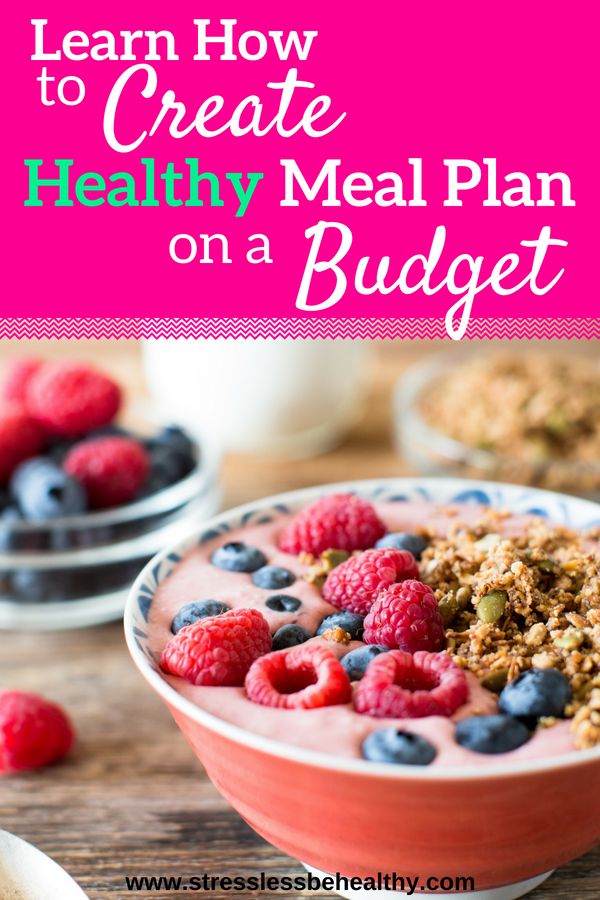 Cereals, fruits, and vegetables, including apple, banana, spinach, broccoli, and carrot, are some foods that may help meet your baby’s daily dietary fiber requirements when included in a properly cooked, age-appropriate manner. However, make sure you include fiber in your baby’s diet in moderation and through various foods.
Cereals, fruits, and vegetables, including apple, banana, spinach, broccoli, and carrot, are some foods that may help meet your baby’s daily dietary fiber requirements when included in a properly cooked, age-appropriate manner. However, make sure you include fiber in your baby’s diet in moderation and through various foods.
References:
MomJunction's articles are written after analyzing the research works of expert authors and institutions. Our references consist of resources established by authorities in their respective fields. You can learn more about the authenticity of the information we present in our editorial policy.
1. Position of the American Dietetic Association: Health Implications of Dietary Fiber; Science Direct
2. Devinder Dhingra et al.; Dietary fibre in foods: a review; National Center For Biotechnology Information
3. Edwards CA and Parrett AM; Dietary fiber in infancy and childhood; National Centre for Biotechnology Information (2003)
4. Types of Carbohydrates; Lane Community College
Types of Carbohydrates; Lane Community College
5. Eating, Diet, & Nutrition for Constipation in Children; Constipation in Children; National Institute of Diabetes and Digestive and Kidney Diseases; National Institute of Health
6. Dietary Reference Intakes: Macronutrients; National Academics
7. Alexandra Barrera; Baby Your Baby – Preventing Pediatric Constipation; Intermountain Moms; Intermountain Healthcare (2013)
8. Soluble vs. insoluble fiber; Medical Encyclopedia; Medline Plus (2018)
9. Dietary Fiber; Colorado State University (2018)
10. Makki K et al.; The Impact of Dietary Fiber on Gut Microbiota in Host Health and Disease; National Centre for Biotechnology Information (2003)
11. Schley PD and Field CJ; The immune-enhancing effects of dietary fibers and prebiotics.; National Centre for Biotechnology Information (2002)
12. Shokryazdan P et al.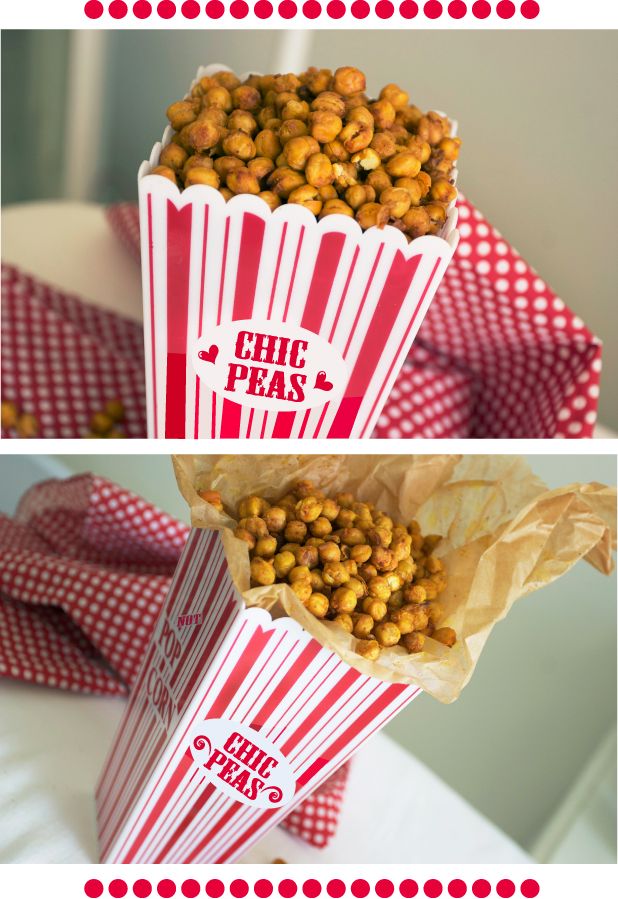 ; Effects of prebiotics on the immune system and cytokine expression.; National Centre for Biotechnology Information (2017)
; Effects of prebiotics on the immune system and cytokine expression.; National Centre for Biotechnology Information (2017)
13. Quigley EMM; Prebiotics and Probiotics in Digestive Health.; National Centre for Biotechnology Information (2019)
14. Paul O Sheridan et al.; Can prebiotics and probiotics improve therapeutic outcomes for undernourished individuals?; National Centre for Biotechnology Information (2014)
15. Candida J. Rebello et al.; Dietary fiber and satiety: the effects of oats on satiety; National Centre for Biotechnology Information (2016)
16. Choking Hazards; Centers For Disease Control And Prevention
17. Treatment for Constipation in Children; Constipation in Children; National Institute of Diabetes and Digestive and Kidney Diseases; National Institute of Health (2018)
18. How to Increase Volume in Your Meals; Post-Core: More Volume, Fewer Calories; Centre For Diseases Control and Prevention
19.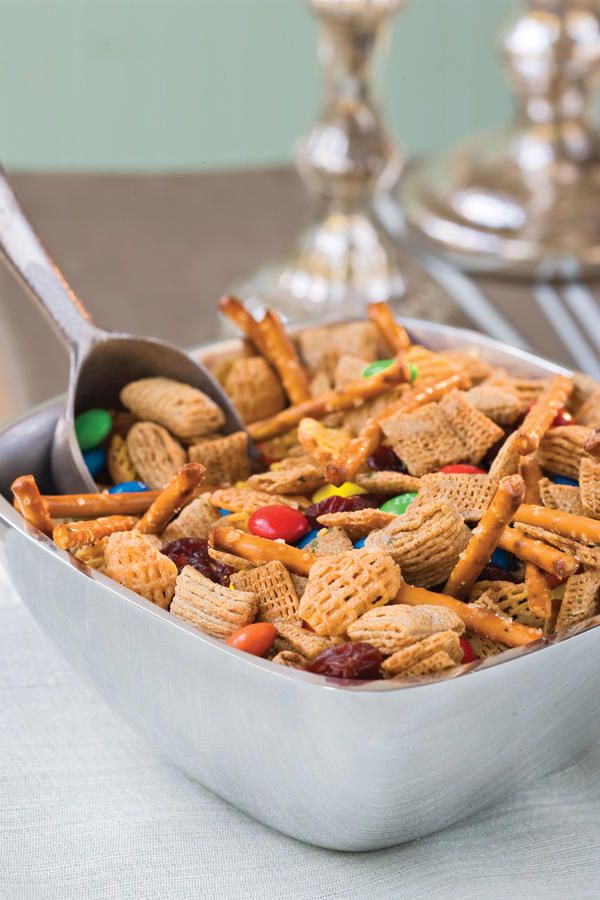 Fiber How Much Is Too Much; Student Affairs; Duke Student Health Nutrition Services
Fiber How Much Is Too Much; Student Affairs; Duke Student Health Nutrition Services
The following two tabs change content below.
- Reviewer
- Author
Swati Patwal is a clinical nutritionist, a Certified Diabetes Educator (CDE) and a toddler mom with over eight years of experience in diverse fields of nutrition. She started her career as a CSR project coordinator for a healthy eating and active lifestyle project catering to school children. Then she worked as a nutrition faculty and clinical nutrition coach in different...
View Profile ›
Natasha Uspensky is a certified holistic nutrition counselor, Ayurvedic practitioner, wellness blogger, and founder of NU Health & Wellness and The Organic Beauty. She practices a holistic approach to wellness, believing that health and happiness come from achieving a sense of balance in all areas of life — from food, movement, and environment, to relationships, community, and career.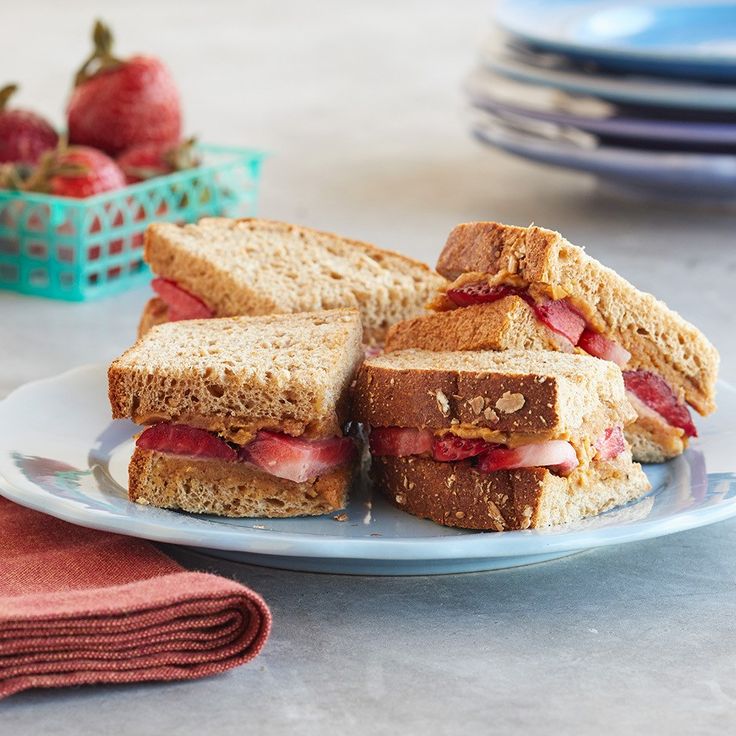 She specializes...
She specializes...
View Profile ›
Ginger For Babies: When To Start, Benefits And Precautions
Ginger For Babies: When To Start, Benefits And Precautions
Can You Eat Raspberries When Pregnant?
Can You Eat Raspberries When Pregnant?
Is It Safe To Eat Jelly During Pregnancy?
Is It Safe To Eat Jelly During Pregnancy?
4 Amazing Health Benefits Of Eating Biltong During Pregnancy
4 Amazing Health Benefits Of Eating Biltong During Pregnancy
9th Month Pregnancy Diet - Which Foods To Eat And Avoid?
9th Month Pregnancy Diet - Which Foods To Eat And Avoid?
Saffron During Pregnancy: Safety, Benefits And Side Effects
Saffron During Pregnancy: Safety, Benefits And Side Effects
Lemon For Babies: When To Introduce, Benefits And Side Effects
Lemon For Babies: When To Introduce, Benefits And Side Effects
8 Delightful Health Benefits Of Blueberries For Babies
8 Delightful Health Benefits Of Blueberries For Babies
Can Babies Have Turmeric? Health Benefits And Precautions
Can Babies Have Turmeric? Health Benefits And Precautions
high protein baby food - 25 recommendations on Babyblog.
 ru
ru Omega-3s are a whole class of essential fatty acids for us. They are essential because our body cannot synthesize them. We can only get omega-3s from food.
Like all fatty acids, Omega-3s are chains of carbon, hydrogen and oxygen atoms. These are polyunsaturated fatty acids, i.e. having two or more double bonds in their chemical structure.
Omega-3s are used by the body for more than just a source of energy. They play an important role in various physiological processes, regulate inflammation, affect heart health and normal brain function. Omega-3 deficiency has been associated with cognitive decline, depression, heart disease, increased risk of stroke, arthritis, and cancer (1, 2).
There are 11 different types of Omega-3 in total. The three main and most common are ALA, EPA and DHA - these are the ones you see on Omega-3 capsule packages. In Russian they are designated as ALA, EPA, DGK. Let's talk about them in more detail.
1. ALA
This is the most common omega-3 in our diet.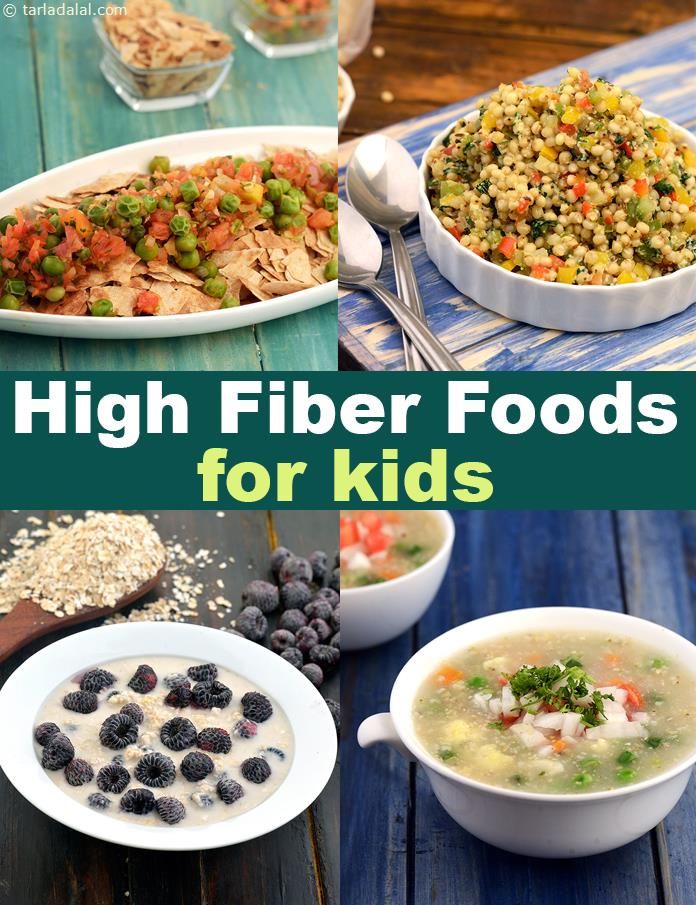 It contains 18 carbon atoms with three double bonds.
It contains 18 carbon atoms with three double bonds.
ALA is mainly found in plant foods: spinach, soybeans, walnuts, chia seeds, flax, hemp, as well as linseed and rapeseed oils.
ALA must be converted to EPA and DHA in order to be beneficial to the human body. But in humans, this conversion process is very inefficient: only 1-10% of ALA is converted to EPA and 0.5-5% to DHA. Conversion rates can vary greatly from person to person. In women, they are usually higher.
In addition, the conversion of ALA is affected by the consumption of other fatty acids: with a diet rich in saturated fat, about 6% of ALA is converted to EPA and 3.8% to DHA. But, if the diet is rich in omega-6 fatty acids (sunflower, soybean, corn, peanut oil), the conversion rate is reduced by 40-50%. The decline in conversion levels begins when Omega-6 intake exceeds Omega-3 intake by 4-6 times. Most modern people consume 15-30 times more Omega-6 than Omega-3 (3, 4, 5, 6, 7).
The part of ALA that is not converted into EPA and DHA remains biologically inactive and is used by the body in the same way as other fats - just as a source of energy.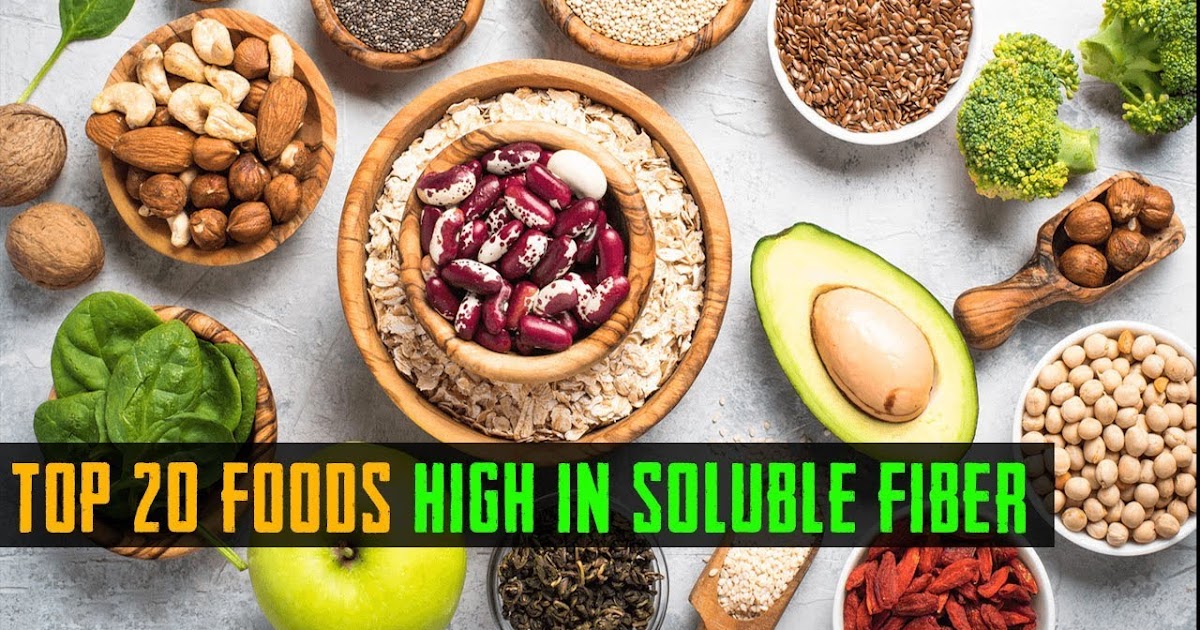
A number of epidemiological studies have shown that high ALA intake can reduce the risk of cardiovascular disease, but also increase the risk of prostate cancer by 70% (8). However, other studies (25) refute the association of ALA with prostate cancer.
Conclusions: The beneficial effect of Omega-3 from plant sources is quite limited and depends on the degree of conversion of ALA to EPA and DHA. You can easily combine omega-3-rich foods with saturated animal fats (such as butter), but limit your intake of regular omega-6-rich vegetable oils. Men in the consumption of plant sources of Omega-3 should observe moderation. For women, products with ALA bring more benefits, because. their conversion rate is higher.
2. EPA (Eicosapentaenoic Acid / EPA)
Contains 20 carbon atoms and has 5 double bonds.
The main source of EPA is fatty fish - salmon, mackerel, herring, eel, sardines, cod liver; seafood, some algae, and grass-fed meat.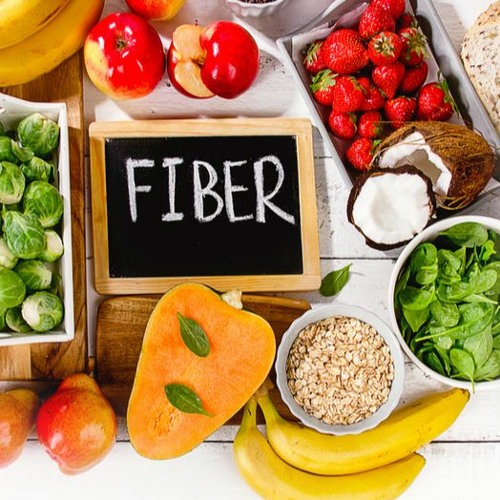
The main role of EPA in the body is the synthesis of the so-called. eicosanoids - signaling molecules that play an important physiological role in our body.
Omega-3-derived eicosanoids reduce inflammation, while omega-6-derived eicosanoids increase it (9). Thus, diets rich in animal sources of omega-3s may counteract the chronic, low-level inflammation that is at the root of many diseases (10). The anti-inflammatory properties of EPA are superior to those of DHA.
Fish oil, rich in EPA and DHA, may relieve symptoms of depression, with EPA having a stronger positive effect (11, 12).
One study indicates that EPA consumption reduces the frequency of hot flushes in menopausal women (13).
3. DHA (Docosahexaenoic Acid / Docosahexaenoic acid / DHA)
Contains 22 carbon atoms and 6 double bonds.
Found in the same foods as EPA: fatty fish, seafood, algae, grass-fed meats, and grass-fed dairy products.
DHA is an important structural component of the skin and iris (14).
Adding DHA to baby food may improve vision in children (15).
DHA plays a vital role in both brain development in children and brain function in adults. DHA deficiency in early life is associated with problems later in life, including learning difficulties, attention deficit hyperactivity disorder, aggressive behavior and other disorders (16).
DHA intake in old age may improve brain function and reduce the risk of Alzheimer's disease (17).
DHA has been shown to have beneficial effects in a number of diseases such as arthritis, hypertension, atherosclerosis, myocardial infarction, type 2 diabetes, and certain types of cancer (18).
DHA reduces the risk of cardiovascular disease, because. reduces triglyceride levels and the number of "bad" LDL cholesterol particles, and increases the size of its particles (19).
DHA causes the destruction of the so-called. lipid rafts in cell membranes, which complicates the survival of cancer cells and the occurrence of inflammation (20, 21).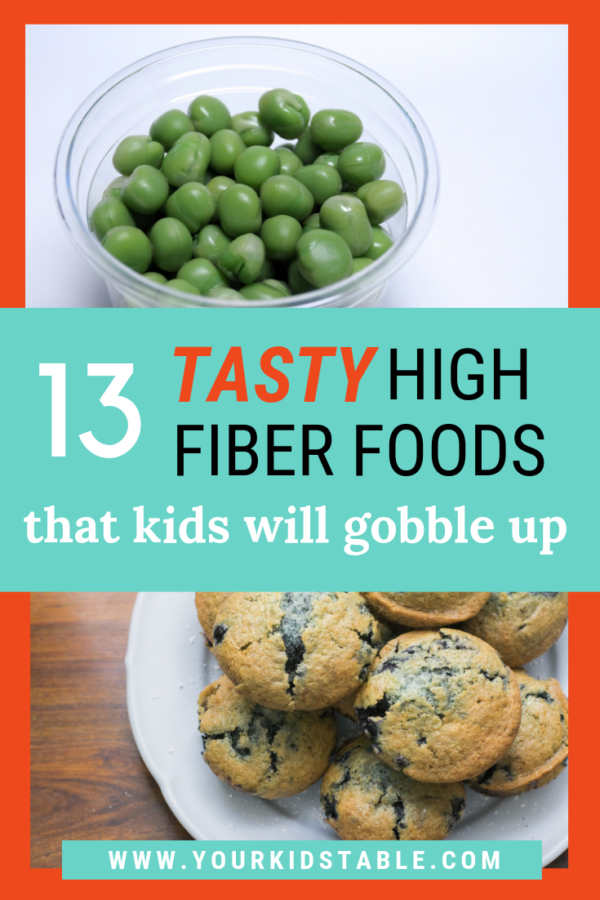
Unlike ALA, EPA and DHA do not increase but decrease the risk of prostate cancer in men (22).
Conclusion : EPA and DHA fatty acids have a whole complex of active beneficial effects on our body. This impact can be especially important both at a very early age and in old age. The main sources of these acids are animal products, primarily oily fish. In addition, high quality fish oil capsules can be a source of EPA and DHA.
According to the recommendations of the European Food Safety Authority (EFSA), the recommended intake of EPA and DHA is 250-500 mg per day. But much higher doses - up to 5 g per day - are considered safe. However, in some people, such doses can cause a deterioration in blood clotting.
The American Heart Association (AHA) recommends a minimum of two 100-gram servings of oily fish weekly to maintain adequate omega-3 levels.
If you are taking medication for high blood pressure, diabetes, or blood thinners, be sure to check with your doctor before taking an omega-3 supplement.
What about vegetarians and vegans?
Vegetarian and especially vegan diets can lead to EPA and DHA deficiencies in the body. According to a study by Swedish scientists (23), the EPA and DHA levels of strict vegans were only 29-36% and 49-52% of non-vegetarians. Other studies (24) showed similar results.
There are two solutions: specific fish oil supplements or improving the conversion of ALA to EPA and DHA.
With the first solution, everything is more or less clear, but for many strict vegans it will not suit for ideological reasons. Then you should pay special attention to your diet in order to achieve the maximum conversion of Omega-3 from plant sources.
How to improve the synthesis of EPA and DHA?
Omega-3 and Omega-6 compete in the body for the same enzymes, so first of all, you should monitor the balance of these fatty acids. For vegetarians not getting EPA and DHA from food, the optimal ratio of omega-6 to omega-3 for the synthesis of these acids is considered to range from 2:1 to 4:1 (24).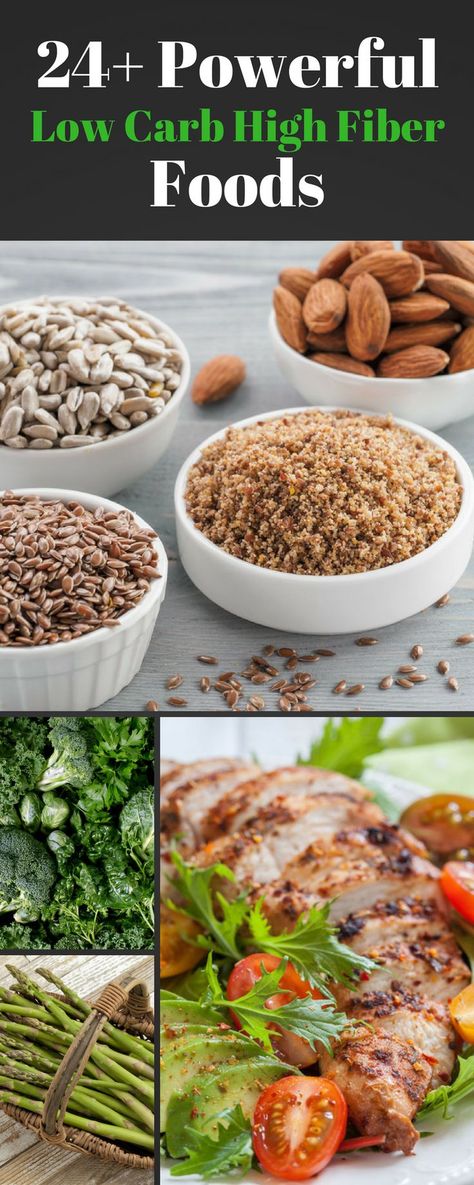
It is also very important to properly structure your diet in order to get enough calories and a variety of nutrients, above all, an adequate amount of protein. A lack of protein and a calorie deficit can interfere with the work of the enzymes responsible for the conversion of ALA. In addition, the conversion slows down the lack of B vitamins (pyridoxine, biotin) and a number of trace elements: calcium, copper, magnesium and zinc. The consumption of alcohol and trans fats negatively affect the synthesis of EPA and DHA.
Vegetable oils rich in omega-6 should be limited as much as possible. These oils include sunflower, corn, soybean, peanut, safflower, sesame, cottonseed, almond, grape seed oils. A much more valuable source of Omega-6 will be whole foods for you: nuts, seeds, sesame seeds, etc. It is much more difficult to overeat them enough to create problems with the balance of fatty acids.
The best source of vegetable fats are foods high in monounsaturated fatty acids: most nuts, olives, olive oil, avocados, rapeseed and olive oil.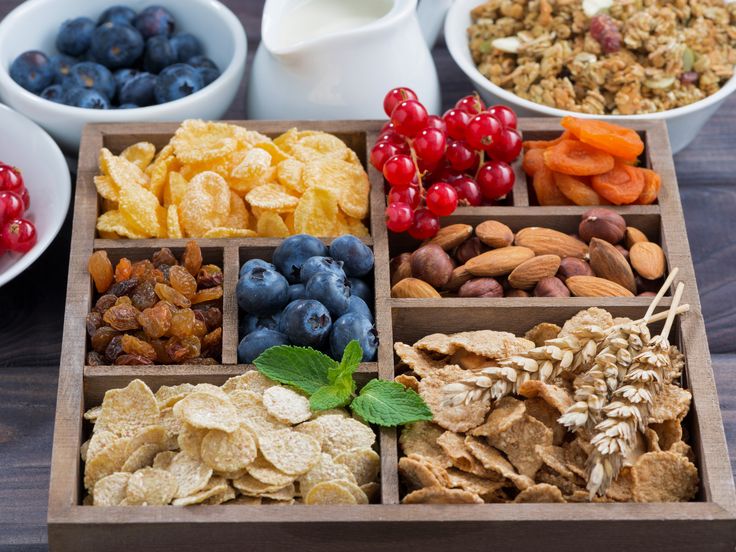 Monounsaturated fats are a good neutral source of energy and don't pose a problem for omega-3 conversion.
Monounsaturated fats are a good neutral source of energy and don't pose a problem for omega-3 conversion.
And, of course, it's important to include enough ALA-containing foods in your diet. Vegetarians and vegans should pay special attention to this. ALA should provide at least 1% of all calories, which corresponds to 1.1 g per 1000 kcal. Those with an increased need for omega-3s or with difficulty in EPA and DHA synthesis can double their daily ALA dose to 2.2 g per 1,000 kcal. Although the possibility of an increased risk of prostate cancer associated with high ALA intake makes one wonder how beneficial it is for men to follow an exclusively plant-based diet and deprive themselves of animal sources of omega-3s.
For those wishing to study the issue in more detail, we recommend this publication.
Plant based ALA content:
Product, Serving Size ALA Per Serving (g) Omega-6 / Omega-3 Ratio Flaxseed Oil, 1 tbsp. spoon, 14 g 8.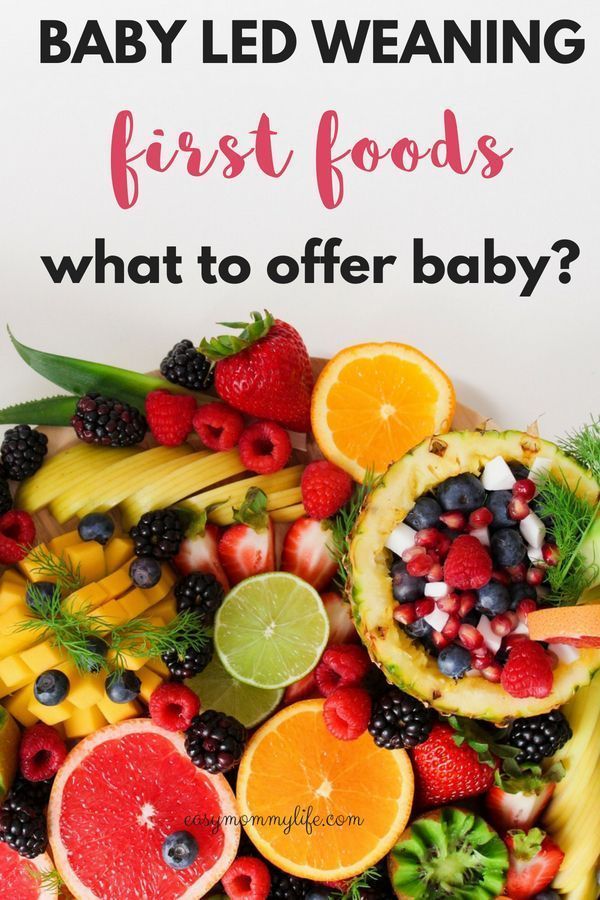 00.28: 1 Flaxseed, 1 tbsp. spoon, 12 g 2.60.28 : 1 Green salad, mixed, cup, 56 g 0.10.19 : 1 Hemp oil, 1 tbsp. spoon, 14 g 2.73:1 Walnuts, ¼ cup, 28 g 2.64:1 Rapeseed oil, 1 tbsp. spoon, 14 g 1.62:1 Chia seeds, 1 tbsp. spoon, 10 g1.80.33:1
00.28: 1 Flaxseed, 1 tbsp. spoon, 12 g 2.60.28 : 1 Green salad, mixed, cup, 56 g 0.10.19 : 1 Hemp oil, 1 tbsp. spoon, 14 g 2.73:1 Walnuts, ¼ cup, 28 g 2.64:1 Rapeseed oil, 1 tbsp. spoon, 14 g 1.62:1 Chia seeds, 1 tbsp. spoon, 10 g1.80.33:1
Source https://lchf.ru/10839
|
Coarse fiber is necessary not only for adults, but also for children. How is it useful for a growing child's body and what are the main sources of fiber? For the first 6 months of a baby's life, mother's milk (or an adapted mixture) is enough. This unique product, the composition of which changes over time, adapting to the needs of the growing body of the crumbs, contains all the substances necessary for growth and development. In addition to fiber. But nature is conceived in such a way that the child does not need it during the period of breastfeeding. With the introduction of complementary foods, this nutrient should become mandatory in the baby's diet. What are the benefits of fiberDespite the fact that dietary fiber is classified as a carbohydrate, it is not a source of energy, it does not contain vitamins and minerals, and, in fact, no nutrients. Perhaps it is for this reason that even 30 years ago, fiber was considered a ballast substance, and they tried to get rid of it by any available means. For example, they produced flour of especially fine grinding, removing the top layer from cereal grains as much as possible. True, scientists quickly realized that this was a road to nowhere, since fiber, which was completely useless, from their point of view, turned out to be not so unnecessary. What is its use for our body? Fiber regulates stools, eating foods rich in this nutrient is an excellent prevention of constipation. It prevents acidification of the environment in the large intestine, allowing harmful bacteria to multiply. The use of foods rich in fiber is the prevention of many intestinal diseases, such as colitis, diverticulitis and others.
Fiber passes through the intestinal tract in transit and, like a sponge, absorbs harmful substances, removing them from the body. In the same way, it absorbs cholesterol and fats, and this is already the prevention of cardiovascular diseases. Fiber is not broken down by enzymes, but is nutrition for the intestinal microflora. Chewing fiber can be difficult, and while the fibers are in the mouth, bile and pancreatic fluid are produced, without which the digestion process is impossible. In addition, fiber:
Fiber varieties
Not all dietary fibers are the same in terms of their composition and the functions that fiber performs in our body. Soluble fiber, when combined with liquid, forms a gel-like substance. It promotes better absorption of nutrients and slows down the absorption of fats. Insoluble dietary fiber passes through the gastrointestinal tract unchanged, acts as an absorbent and "cleaner" of the intestine. Soluble fibers include:
Insoluble fiber
Insoluble dietary fibers include cellulose and lignin. Passing through the gastrointestinal tract, these substances swell and combine with food into a kind of lump, which then moves into the lower sections, stimulating muscle contractions of the intestinal walls. In this way, insoluble fiber, like a stiff brush, cleanses the digestive tract of food debris, preventing it from stagnation and poisoning the body. Insoluble dietary fiber contributes to the formation of a full-fledged stool, has a mild laxative effect, and prevents constipation. The main sources of insoluble fiber are cabbage, potatoes (especially the skins), apple and pear peels, carrots, and beets. How much fiber do children needAlthough a baby needs dietary fiber from the time he starts eating anything other than mother's milk or formula, too much can harm the delicate intestines. Pediatricians in collaboration with nutritionists have deduced a certain formula, thanks to which it is possible to calculate how much fiber per day a baby can and should get: 5 g of fiber must be added to the number of full years of the baby. Of course, it is practically impossible to calculate the amount of dietary fiber, which means you just need to adhere to the principle of moderation and common sense - do not feed your baby only processed refined foods, but also do not insist if he does not want to eat, for example, legumes. Sources of fiber
Almost all vegetables and fruits are a source of dietary fiber, but the amount of fiber in them decreases during heat treatment. It is interesting that in many products, for example, in potatoes or apples, in the process of storage of dietary fiber becomes more. FruitChampions in terms of fiber content are not apples, as is commonly believed, but apricots, plums, pears and peaches. Apples and bananas also have dietary fiber, but in smaller amounts. Vegetables Many vegetables are rich in fiber, but peas, spinach and broccoli contain the most fiber. Potato also requires a reasonable approach, because, in addition to fiber, it contains a large amount of starch. So it is better for children to partially replace it with sweet potatoes - sweet potatoes. KashiParticularly rich in fiber whole grain cereals - rice, oatmeal, barley. BreadWhole-grain bread contains the most dietary fiber, while white bread and finely ground wheat flour breads contain very little fiber. But they have a lot of carbohydrates, which in such quantities adversely affect the work of the baby's digestive tract.
Please note: there are special children's crackers and biscuits on sale - they contain a sufficient amount of fiber. Juices There is no fiber in clarified juices, but in juices with pulp and smoothies there is a lot of dietary fiber. |

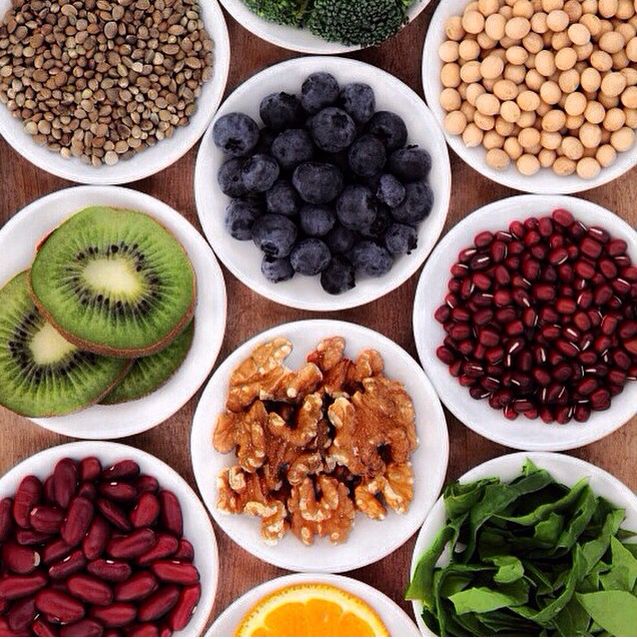



 Thus, it turns out that at 4 years old, a child needs no more than 9
Thus, it turns out that at 4 years old, a child needs no more than 9 However, these products should be given to children with caution: fiber has a certain side effect - with an excess in the body, it can cause increased gas formation.
However, these products should be given to children with caution: fiber has a certain side effect - with an excess in the body, it can cause increased gas formation. 










